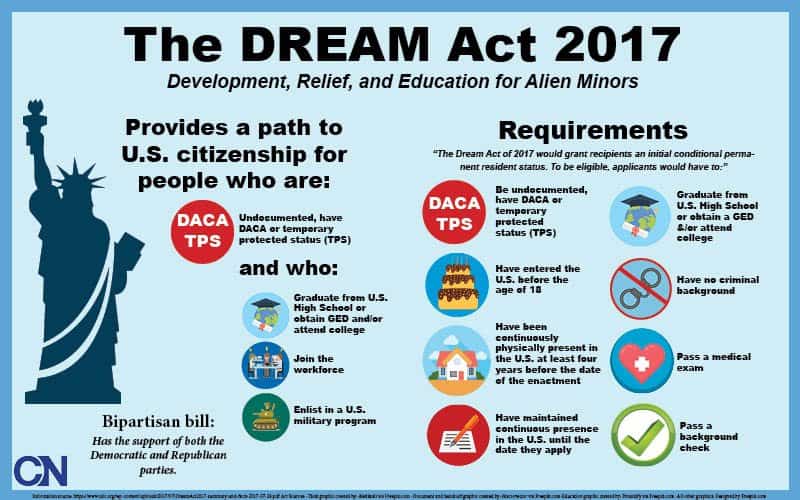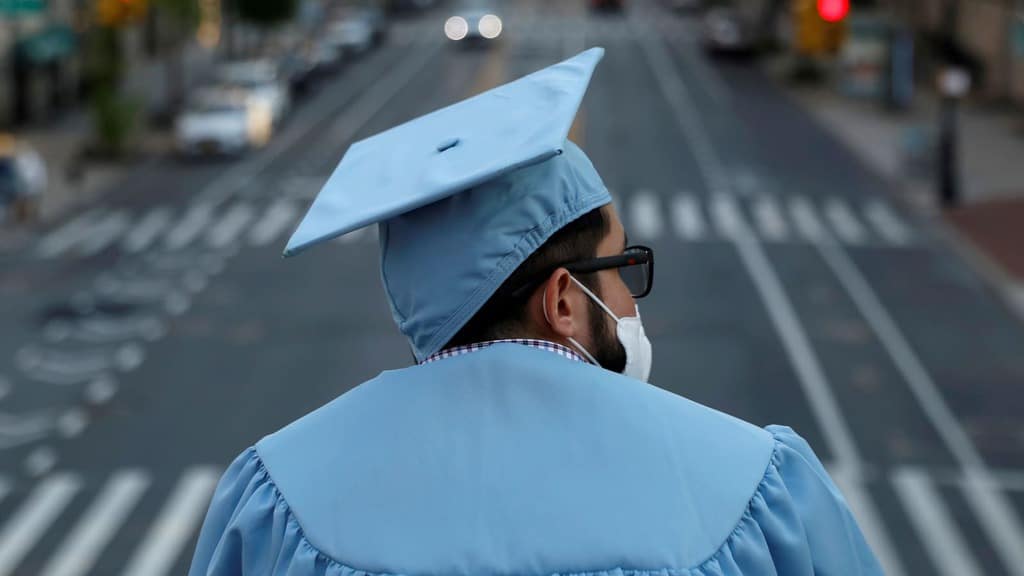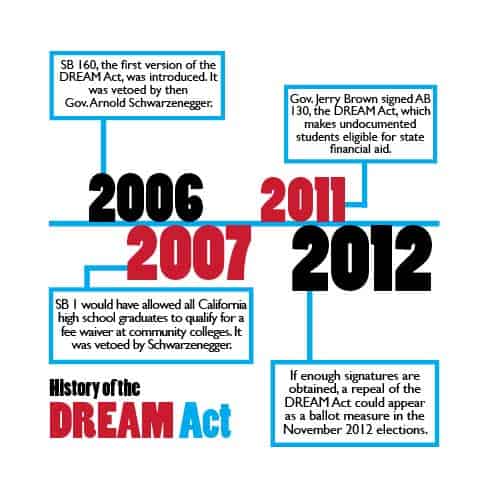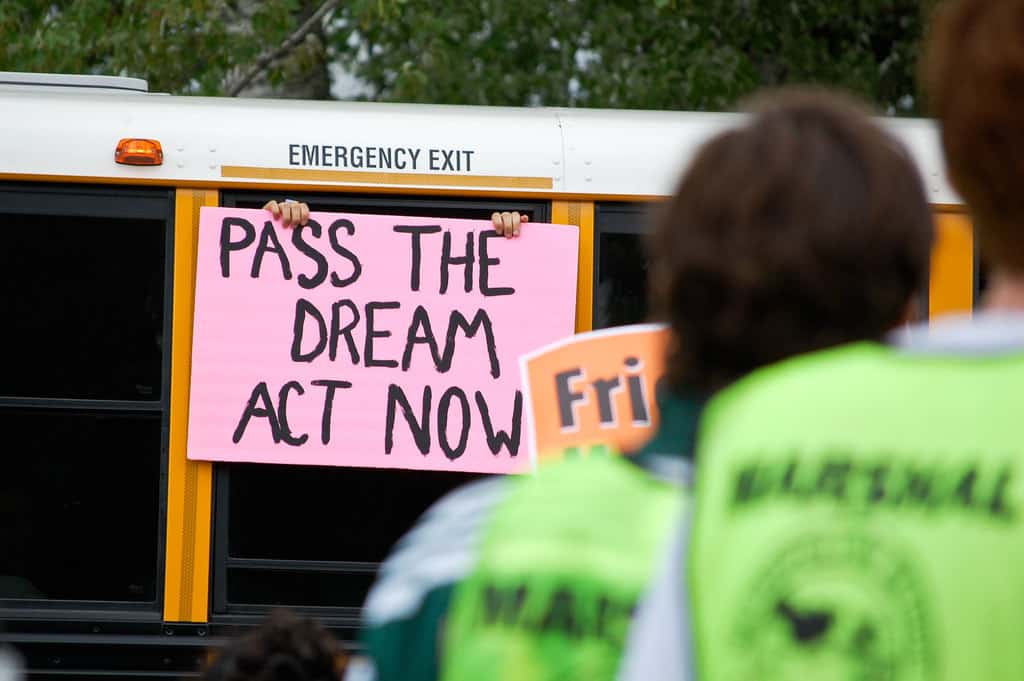For over three million high school graduates each year in the United States, pursuing a college degree is a possibility that many students take advantage of. However, for an estimated one to two million students, attending college is a privilege and a rite of passage that is just out of reach.
This is mainly in part due to their inherited status as an illegal immigrant.

These tens of thousands of students are children of men and women who have been identified as illegal immigrants by the United States government. The passage of the DREAM Act would help provide a college education and citizenship to students who qualify under the act’s standards.
What Is the DREAM Act?
The DREAM Act, or the Development, Relief, and Education for Alien Minors Act, would create a path to eventual United States citizenship for young adults who entered the United States as illegal immigrants when they were children.

According to the San Antonio Express-News, the most recent proposal, which was introduced by Senator Harry Reid, would require candidates for citizenship or DREAMers to meet a stringent set of criteria:
- entering the United States prior to the age of 16
- graduated from high school or have earned a GED
- living in the United States for at least five years
- be under 30 years of age at the time of the bill’s passing
- have a clean criminal record – no felonies or misdemeanors
- pass a background check completed by the United States Department of Homeland Security

After meeting these criteria, DREAMers would be granted conditional citizenship for a period of 10 years. During their time as a conditional citizen, DREAMers would be required to either serve a minimum of two years in any branch of the military or complete at least two years of a bachelor’s degree program at a college or university.
After those standards have been met, DREAMers may continue the process of applying for full United States citizenship.
College Students and the DREAM Act
Currently, gaining access to any form of post secondary education is difficult for potential DREAMers due to a lack of proper documentation.

These students often do not have documentation from their legal country of citizenship, but also lack a Social Security number and the proper documentation to enroll in American colleges and universities.
According to the National Conference of State Legislatures, laws passed in 1996, namely The Illegal Immigration Reform and Immigrant Responsibility Act (IIRIRA,) attempted to prevent states from providing post secondary education of any kind to illegal students without proper documentation.

Since then, eleven states have passed legislation to counter the IIRIRA and allow certain long-term illegal immigrant students to enroll at in-state tuition prices, provided that they meet certain qualifications.
However, there are some students who are able to enroll and pay for a college education or professional training. These students are unable to receive federal student loans, college scholarships, or grants because they are not United States citizens. Some colleges and universities may also charge illegal immigrant students out-of-state tuition rates, even if their address is in the same state as their college or university.

If the DREAM Act is eventually passed, schools may no longer be able to charge illegal immigrant students out-of-state tuition if their permanent address is within the same state.
Under the current proposed DREAM Act, DREAMers who have been granted conditional citizenship status would be able to attend a college or university, but would be restricted in what kinds of college financial aid they would be eligible to receive.

Additionally, a DREAMer’s conditional status may also present problems if the student wishes to study abroad for an extended amount of time due to citizenship provisions.
Passing the DREAM Act
The DREAM Act, which was first introduced in 2001, has undergone many changes and challenges since its introduction. These include changes in qualifications to achieve conditional citizenship status, how long a student must remain in school, and other provisions to establish a set of standards to qualify for eventual citizenship.

- What Is Aromatherapy Vs. What Are Essential Oils?
- What is La Tomatina in Bunol, Spain Like? What to Expect at the Famous Tomato Throwing Festival
The roadblock was the failing Senate vote on Senator Reid’s version of the DREAM Act in a vote on Saturday, December 18, 2010, reports NPR. The bill failed 55-41, with four senators abstaining or not present at the time.
Several politicians and activists, including President Barack Obama, Senator Dick Durbin (D-Illinois,) Senator Jon Kyl (R-Arizona,) and Jorje-Mario Cabrera of the Coalition for Humane Immigrant Rights in Los Angeles, publicly voiced their disappointment in the bill’s veto.

Some said that the failing vote was a dark day for immigration reform and making a college education available for those who wanted it.
The DREAM Act, originally introduced in 2001, strives to provide a path to citizenship for illegal immigrant students who wish to be United States citizens. However, the bill still meets resistance from legislators and others who oppose forms of immigration reform.


















